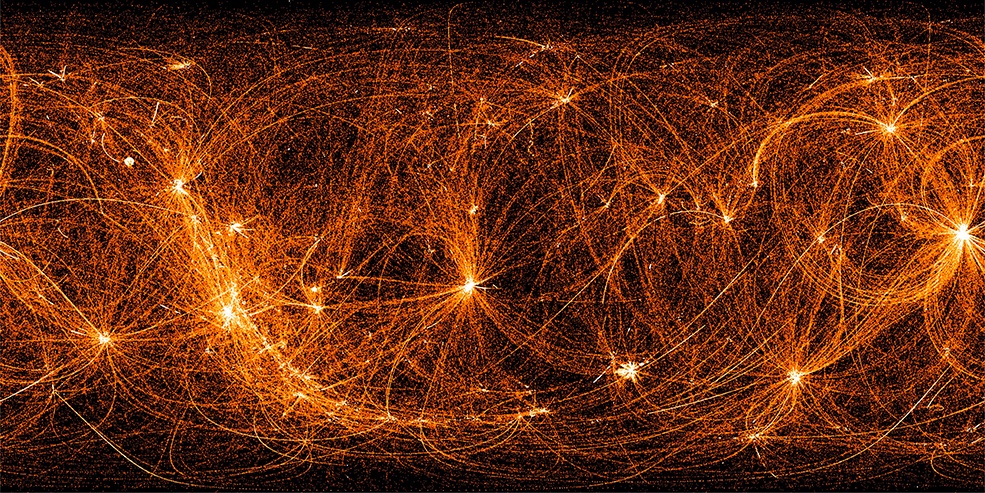
- NASA has released a map of the entire sky (figure above) in X-rays recorded by NASA’s Neutron star Interior Composition Explorer (NICER), a payload on the International Space Station.
- NICER’s primary science goals require that it target and track cosmic sources as the station orbits Earth every 93 minutes. But when the Sun sets and night falls on the orbital outpost, the NICER team keeps its detectors active while the payload slews from one target to another, which can occur up to eight times each orbit.
- The map includes data from the first 22 months of NICER’s science operations.
- Each arc traces X-rays, as well as occasional strikes from energetic particles, captured during NICER’s night moves. The brightness of each point in the image is a result of these contributions as well as the time NICER has spent looking in that direction. A diffuse glow permeates the X-ray sky even far from bright sources.
- NICER’s primary mission is to determine the size of dense remains of dead stars called neutron stars — some of which we see as pulsars — to a precision of 5%. These measurements will finally allow physicists to solve the mystery of what form of matter exists in their incredibly compressed cores. Pulsars, rapidly spinning neutron stars that appear to “pulse” bright light, are ideally suited to this “mass-radius” research and are some of NICER’s regular targets. (NASA)
What is Neutron Star?
- According to the NASA, Neutron stars are formed when a massive star runs out of fuel and collapses. The very central region of the star – the core – collapses, crushing together every proton and electron into a neutron.
- If the core of the collapsing star is between about 1 and 3 solar masses, these newly-created neutrons can stop the collapse, leaving behind a neutron star. (Stars with higher masses will continue to collapse into stellar-mass black holes.)
- This collapse leaves behind the most dense object known – an object with the mass of a sun squished down to the size of a city.
What is Pulsar?
- Most neutron stars are observed as pulsars. Pulsars are rotating neutron stars observed to have pulses of radiation at very regular intervals that typically range from milliseconds to seconds. Pulsars have very strong magnetic fields which funnel jets of particles out along the two magnetic poles. These accelerated particles produce very powerful beams of light.


